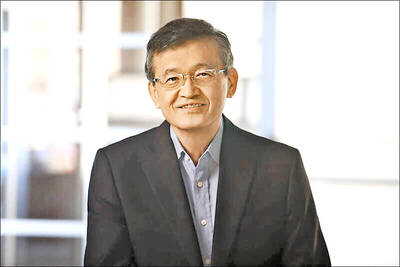Japan’s trade surplus tumbled for a fifth straight month last month as China overtook the ailing US economy to become the country’s biggest export market, official figures showed yesterday.
It was the first time in the post-war era that China has been the top destination for Japanese goods, underscoring the continued brisk growth of the Asian powerhouse despite a worsening global economy.
Robust shipments to the rest of Asia helped Japanese exports to rebound last month, after dropping in June for the first time in more than four years.
Even so, the overall trade surplus plunged 86.6 percent last month from a year earlier to ¥91.1 billion (US$830 million) as high oil prices drove up the cost of energy imports, the finance ministry said.
Markets had expected a much bigger surplus of about ¥225 billion.
Imports rose 18.2 percent by value to ¥7.54 trillion, while exports gained 8.1 percent to ¥7.63 trillion.
Brisk exports have been a key driver of a recovery in Japan, the world’s second-largest economy, after a slump stretching back more than a decade.
But fears of a recession have grown since the economy shrank in the second quarter of this year, partly because of sluggish exports.
The rebound in exports last month eased concerns that the Japanese economy was headed for a severe slump, although most analysts expect growth to remain sluggish for the rest of this year.
It was too soon to say Japan’s economy is back in recovery mode, “but the July data indicated that the economy is not deteriorating rapidly,” JP Morgan economist Masamichi Adachi said.
“The outlook for the Japanese economy essentially hinges on a recovery in the US economy. Oil prices are falling, which is good news, but I think it is still too early to predict the outlook,” he said.
Japan’s trade surplus with the rest of Asia jumped 42.3 percent from a year earlier as exports gained 12.7 percent and imports rose 5.7 percent, both hitting record highs.
Shipments to China increased 16.8 percent to a record high as imports grew 5.1 percent to scale a new peak.
Exports to China were boosted by shipments of mineral fuels, particularly for trucks, for reconstruction efforts following the massive quake in Sichuan Province in May.
Asian economies are now also showing signs of weakening, weighing on demand for Japanese steel, chemical and electronic machinery, said Hiroshi Watanabe, an economist at Daiwa Research Institute.
“Since last year, we have been seeing a gradual slowdown in Japan’s export growth. The latest data confirmed this trend. This is a reflection of the continued worsening of the global economy,” he said.
“Rising prices of raw materials have affected the domestic demand of Asian countries, as well as the developed nations,” Watanabe said.
Exports to the US slumped 11.5 percent last month while imports from the world’s largest economy fell 3.5 percent. US-bound auto exports, one of the key drivers of the Japanese economy, dropped 11.7 percent.
Exports to the EU rose 4.1 percent as imports from the region fell 6.3 percent.
“Weak auto exports to the EU and the US reflect the weakness of those economies,” Watanabe said.

Intel Corp chief executive officer Lip-Bu Tan (陳立武) is expected to meet with Taiwanese suppliers next month in conjunction with the opening of the Computex Taipei trade show, supply chain sources said on Monday. The visit, the first for Tan to Taiwan since assuming his new post last month, would be aimed at enhancing Intel’s ties with suppliers in Taiwan as he attempts to help turn around the struggling US chipmaker, the sources said. Tan is to hold a banquet to celebrate Intel’s 40-year presence in Taiwan before Computex opens on May 20 and invite dozens of Taiwanese suppliers to exchange views

Application-specific integrated circuit designer Faraday Technology Corp (智原) yesterday said that although revenue this quarter would decline 30 percent from last quarter, it retained its full-year forecast of revenue growth of 100 percent. The company attributed the quarterly drop to a slowdown in customers’ production of chips using Faraday’s advanced packaging technology. The company is still confident about its revenue growth this year, given its strong “design-win” — or the projects it won to help customers design their chips, Faraday president Steve Wang (王國雍) told an online earnings conference. “The design-win this year is better than we expected. We believe we will win

Chizuko Kimura has become the first female sushi chef in the world to win a Michelin star, fulfilling a promise she made to her dying husband to continue his legacy. The 54-year-old Japanese chef regained the Michelin star her late husband, Shunei Kimura, won three years ago for their Sushi Shunei restaurant in Paris. For Shunei Kimura, the star was a dream come true. However, the joy was short-lived. He died from cancer just three months later in June 2022. He was 65. The following year, the restaurant in the heart of Montmartre lost its star rating. Chizuko Kimura insisted that the new star is still down

While China’s leaders use their economic and political might to fight US President Donald Trump’s trade war “to the end,” its army of social media soldiers are embarking on a more humorous campaign online. Trump’s tariff blitz has seen Washington and Beijing impose eye-watering duties on imports from the other, fanning a standoff between the economic superpowers that has sparked global recession fears and sent markets into a tailspin. Trump says his policy is a response to years of being “ripped off” by other countries and aims to bring manufacturing to the US, forcing companies to employ US workers. However, China’s online warriors